Resultant Angle Of Two Vectors
Two vectors of different magnitudes cannot give zero resultant vector. Example 3 Find out the angle between the given two vectors.

The Resultant Of Two Vectors Vec A And Vec B Is Perpendicular To The Vector Youtube
X2Y2Z2 are the values of the second vector.

Resultant angle of two vectors. Which of the following is true. When two vectors having the same magnitude are acting on a body in opposite directions then their resultant vector is zero. Mathematically angle between two vectors can be written as.
When were given two vectors with the same initial point and theyre different lengths and pointing in different directions we can think about each of them as a force. From triangle OCB OB2 C 2 BC 2. The resultant of addition of two vectors cannot be at an angle of 90 o with respect to both the vectors.
Resultant R2 A2 B2 2ABcosOr 7 b2 a2 b2 2abcos60oOr 7b2 a2 b2 abOr a2 ab6b2 0Or a3ba2b 0 a 2b ab 2. Homework Statement Given the magnitudes of vectors u and v and the angle between them find sum of u v. To draw the resultant vector join the tail of the first vector with the second vectors head and put the arrowhead.
An explanation of the difference between vectors and scalars and a demonstration of how to calculate the resultant of two vectorsBy Cowen Physics wwwcowe. Use the cosine law to find the length of the side opposite the 120 degree angle the magnitude of the resultant vector and then use the sine law to find the angle. The head to tail method to calculate a resultant which involves lining up the head of the one vector with the tail of the other.
If the resultant vector is at an angle with respect to P then. In such case if they are represented in direction and magnitude taken in order one after another then they. Calculate the dot product of the 2 vectors.
Calculate the angle between the 2 vectors with the cosine formula. Methods for calculating a Resultant Vector. The following formula is used to calculate the resultant vector from the summation of two different vectors.
Or OB2 OAAC2 BC 2. The resultant vector is the single vector whose effect is the same as the individual vectors acting together. Then according to parallelogram law of vector addition diagonal OB represents the resultant of P and Q.
Step 3 follows from the definition of atan2. R P 2 Q 2 2PQcos. To find the magnitude and angle of a resultant force we create vector equations for each of the given forces add the vector equations together to get the vector equation of the resultant force find magnitude of the resultant force using the new vector equation and the distance formula.
arccosx a x b y a y b x a 2 y a 2 x b 2 y b 2. Find the dot product of the vectors. A 6i 5j 7k.
The resultant of two vectors can be done in different methods like 1 Using the Triangle Law 2 Using the Law of Parallelogram and 3 using Rectangular Components Pythagoras Theorem. Hence this shows that the resultant will bisect the angle between the two vectors having equal magnitude. Give the magnitude to the nearest tenth when necessary and give the direction by specifying the angle that the resultant makes with u to the nearest degree.
The parallelogram method to calculate resultant vector. Three vectors of different or same magnitudes can give zero resultant vector if they are collinear. R P Q.
Among these three methods the third one is quite handy to solve vector numerical problems. There are a two different ways to calculate the resultant vector. Step 2 follows from the definition of atan2 noting that atan2 cy cx atan2 yx where c is a scalar.
Now expand A to C and draw BC perpendicular to OC. Use your calculators arccos or cos-1 to find the angle. When looking at the angles in relation to the directions the cross we can deduct that the angle between the two.
The resultant vector is the vector that results from adding two or more vectors together. Calculate the length of each vector. Ii When two vectors act in the opposite direction In this case the angle between the two vectors 180o cos 180o -1 sin 180o 0.
To calculate the angle between two vectors in a 2D space. The parallelogram method to calculate resultant vector. This video shows how to find the magnitude and angle of the resultant force given the magnitude and angle between two vectors.
Divide the resultant with the magnitude of the second vector. The resultant vector is the vector that results from adding two or more vectors together. A piece of wood of mass M and volume V is floating in water.
Divide the dot product with the magnitude of the first vector. The resultant of two vectors A and B is perpendicular to A and it has magnitude half that of B The angle between the vector A and B is 4 90 B 120 C 140 D 1500 25. Scalar dot product of two vectors lets you get the cosinus of the angle between them.
The formula for calculating the resultant of two vectors is. So we assume that the resultant is at an angle of 90 o with respect to P. The black vectors are the two displacements through which the Thompsons went to get to the lodge the blue vector is the shorter direct path to the lodge the resultant vector.
Let be the angle between P and Q and R be the resultant vector. Step 4 follows from the geometric definitions of cos and sin.
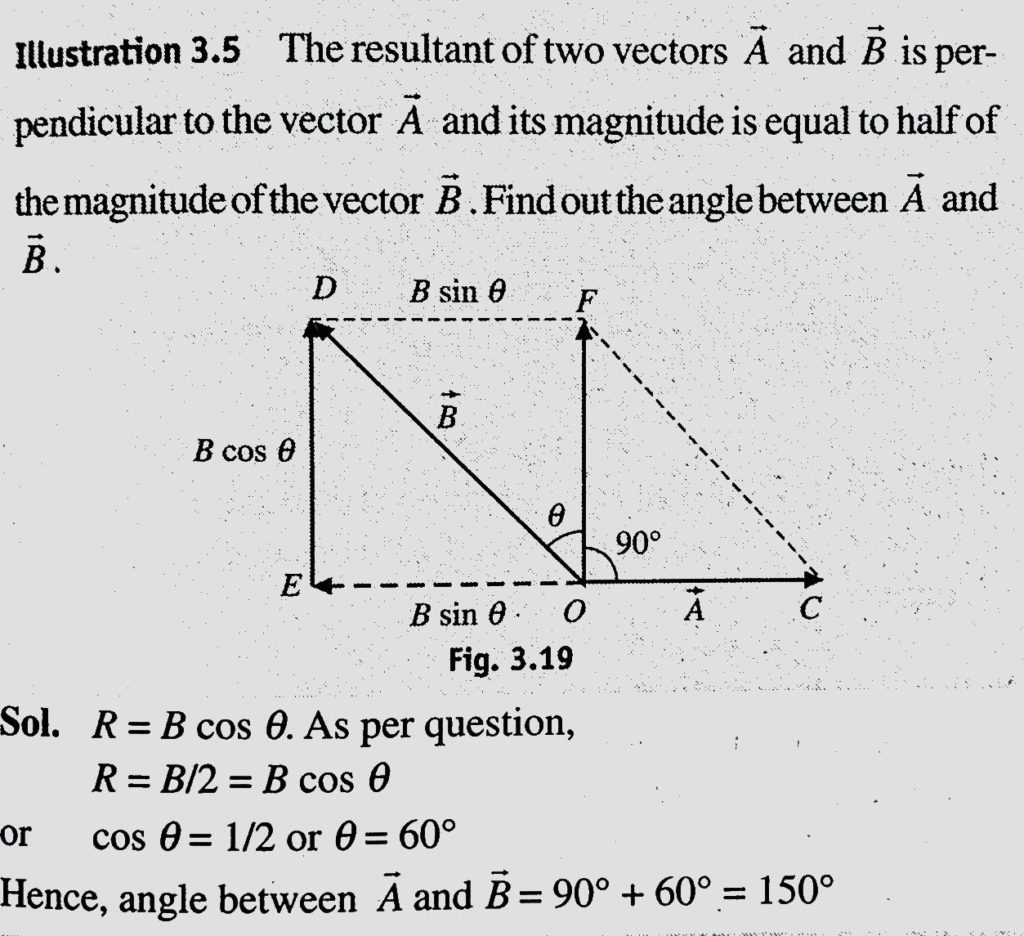
The Resultant Of Two Vectors A And B Is Perpendicular To The Vector A And Its Magnitude Is Equal To Half The Magnitude Of Vector B The Angle Between A And B
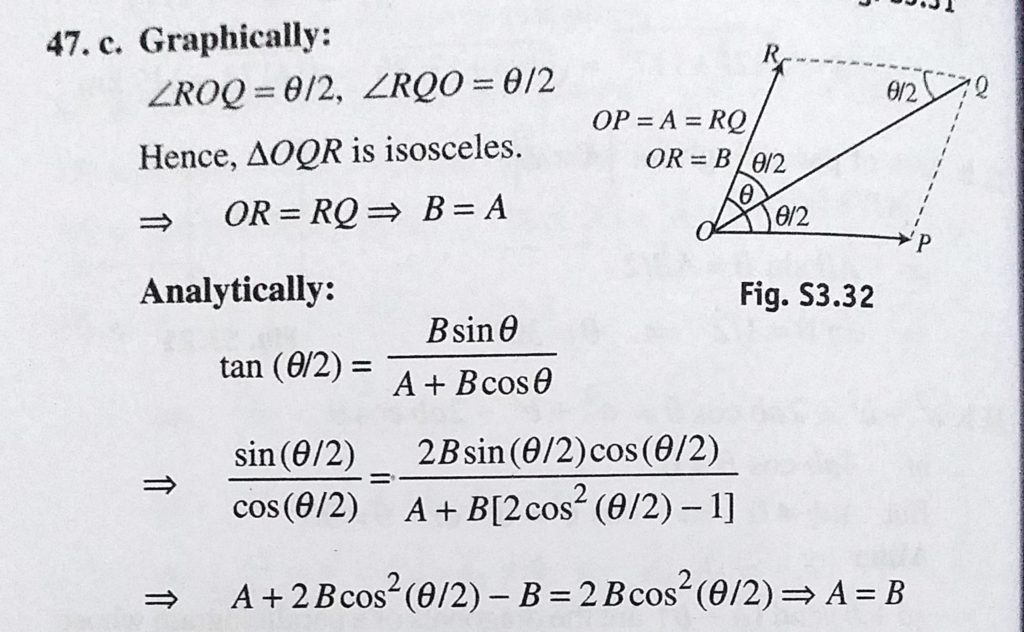
The Angle Between Two Vectors A And B Is Theta The Resultant Of These Vectors R Makes An Angle Of Theta 2 With A Which Of The Following Is True Sahay Lms
The Resultant Of Two Vectors Of 5 Units And 8 Units Is Making An Angle Of 53 From The First Vector What Is The Angle Between Two Vectors And Magnitude Of Resultant Quora

Two Vectors Vec A And Vec B Inclined At An Angle Theta Have A Resultant Vec R Youtube
Two Vectors Are Inclined At An Angle Theta How Would You Add These Two Vectors Analytically Quora
Resultant As Magnitude And Direction Ck 12 Foundation

Resultant Of Two Vectors Of Magnitude P And Q Is Of Magnitude Q If The Magnitude Of Youtube
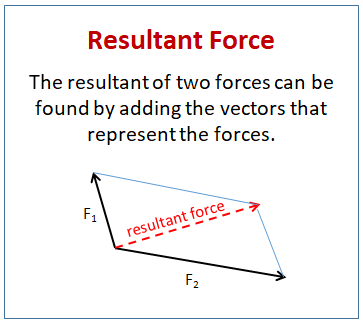
The Resultant Of Two Forces Solutions Examples Videos Worksheets Games Activities

Question Video Finding The Resultant Of Two Vectors Using The Parallelogram Method Nagwa

Lesson 1 Vector Addition Numerical

Vector Application Find Magnitude And Angle Of The Resultant Force Youtube

The Resultant Of Two Vectors Of Magnitudes 3 Units And 5 Units Is Perpendicular To 3 Units Youtube

How To Show That The Resultant Of Two Equal Vectors Bisects The Angle Between The Vectors Quora

Two Vectors Having Equal Magnitude Of 5 Units Have An Angle Scholr

Two Forces 3n And 4n Are Acting Perpendicular To Each Other What Is The Magnitude Of The Resultant Force And How Quora
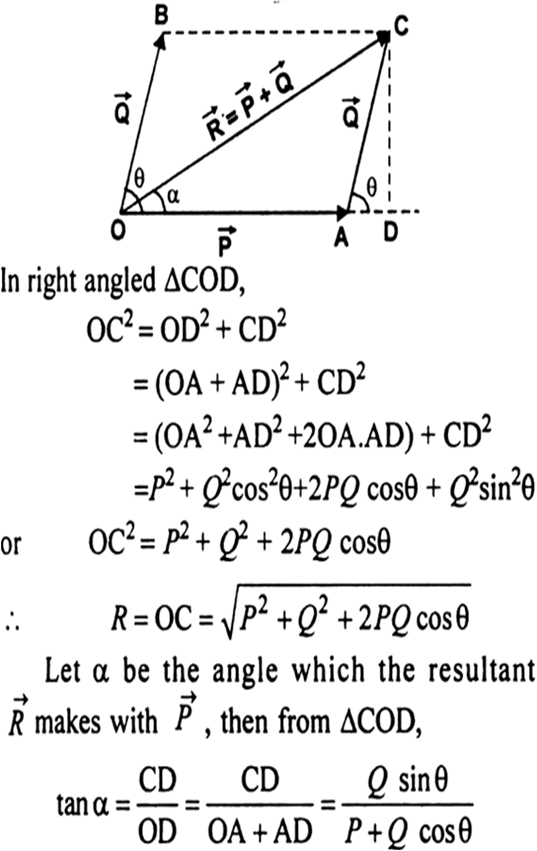
Find The Magnitude And Direction Of Resultant Of Two Vectors Analytically Discuss The Special Cases For Angle Between The Vectors I 0 Ii 180 Iii 90 From Physics Motion In A Plane Class 11 Cbse
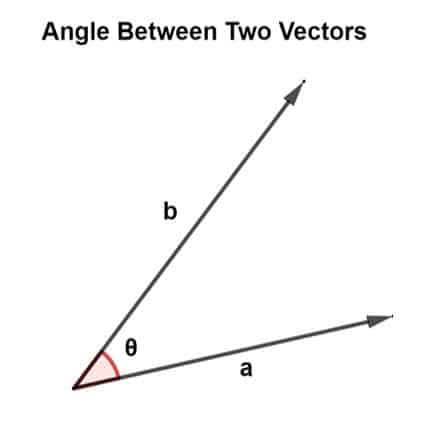
Angle Between The Two Vectors Explanation And Examples

Vector Application Find Magnitude And Angle Of The Resultant Force Youtube


Post a Comment for "Resultant Angle Of Two Vectors"